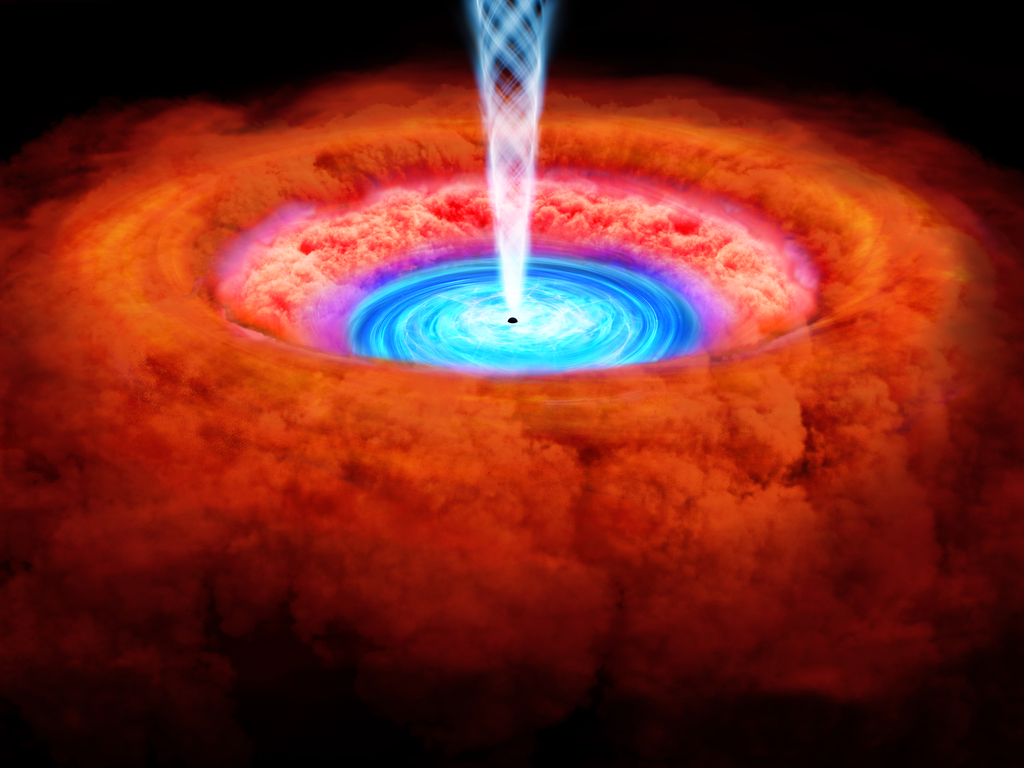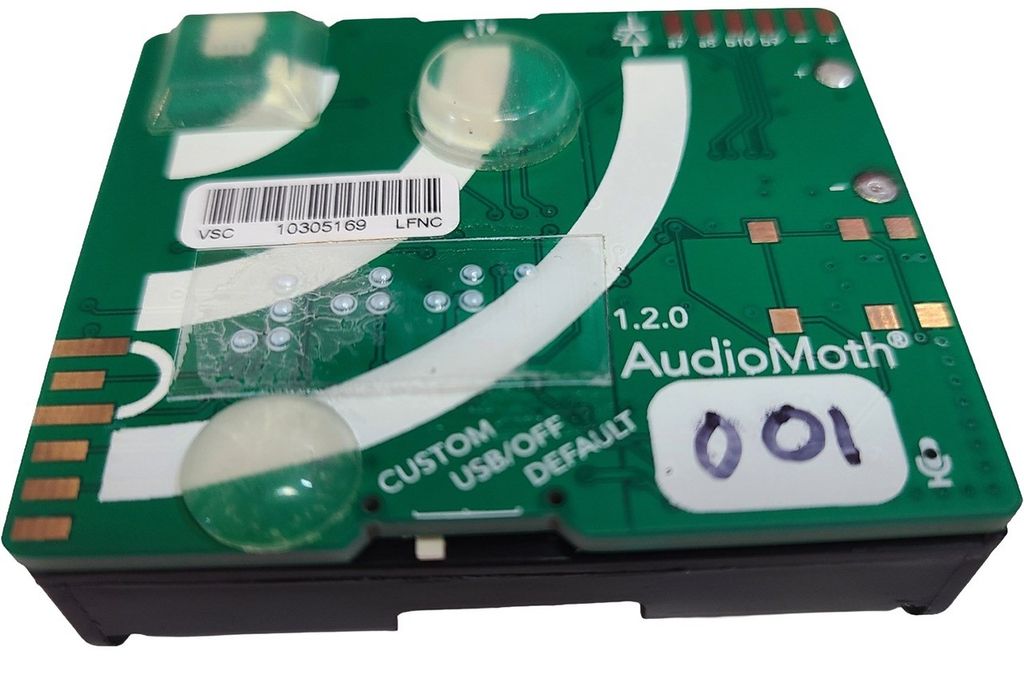1 min read
Galaxies IC 2163 and NGC 2207 (Webb and Hubble Image)
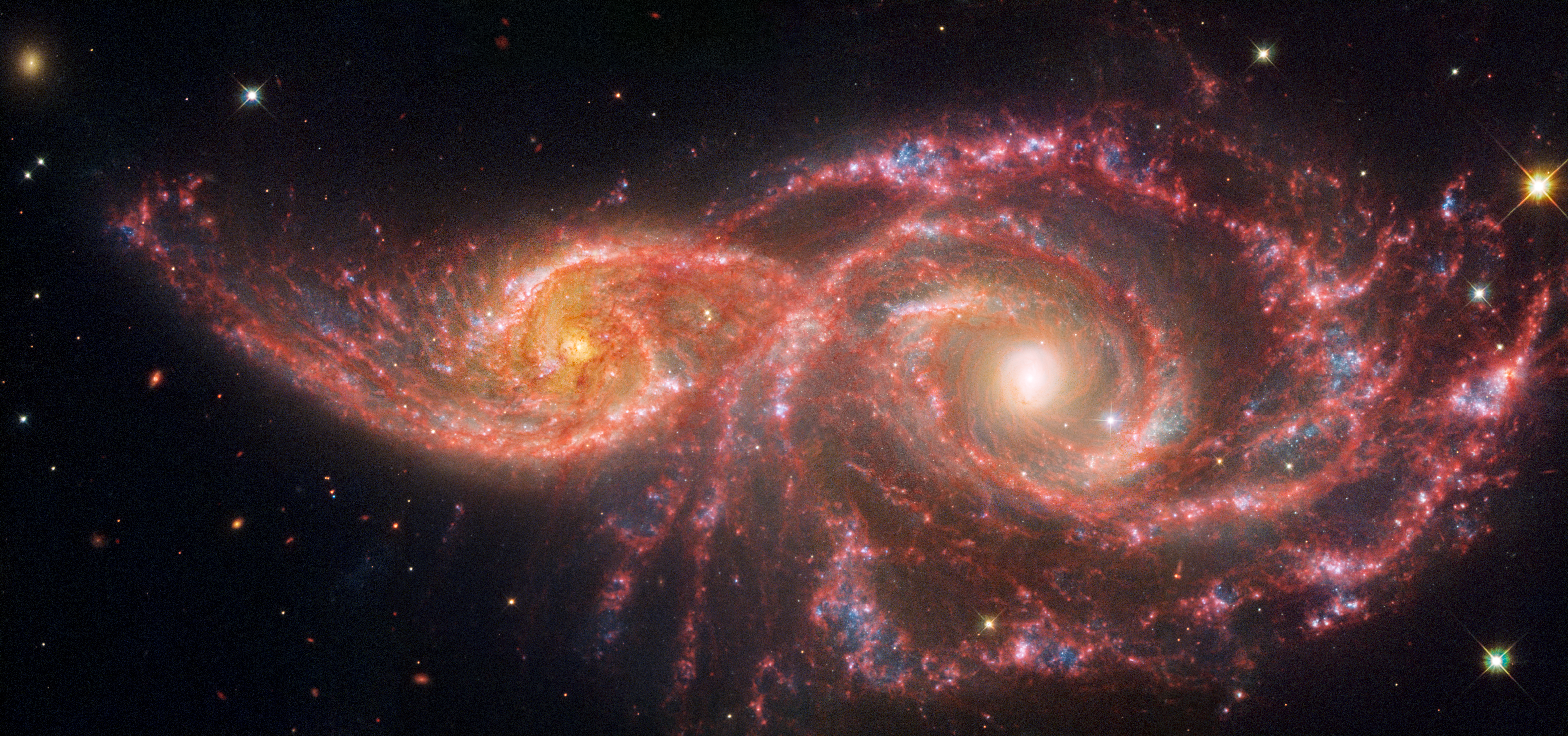
The gruesome palette of these galaxies is owed to a mix of mid-infrared light from NASA’s James Webb Space Telescope, and visible and ultraviolet light from NASA’s Hubble Space Telescope. The pair grazed one another millions of years ago. The smaller spiral on the left, cataloged as IC 2163, passed behind NGC 2207, the larger spiral galaxy at right.
Both have increased star formation rates. Combined, they are estimated to form the equivalent of two dozen new stars that are the size of the Sun annually. Our Milky Way galaxy forms the equivalent of two or three new Sun-like stars per year.
Both galaxies have hosted seven known supernovae, each of which may have cleared space in their arms, rearranging gas and dust that later cooled, and allowed new many stars to form. (Find these areas by looking for the bluest regions).
Examine the galaxies’ radically white appearance in mid-infrared light, and compare the Hubble and Webb images side by side.
Extended Description and Image Alt Text
Extended Description
Two face-on spiral galaxies take up almost the entire view, both set against the black background of space. At first glance, their bright cores, and red and blue spiral arms make the galaxies look like a colorful masquerade mask that sits above the nose. The galaxy at left, IC 2163, is smaller than the galaxy at right, taking up a little over a quarter of the view. The galaxy at right, NGC 2207, takes up half the view, with edges of its spiral arms reaching the bottom, right, and top of the frame. The two galaxies overlap at the center of the frame, with the smaller IC 2163 behind the larger NGC 2207.
IC 2163
IC 2163 has a bright orange core, with the light so dense at the very center that it appears almost yellow. From this central yellow point, dust lanes wind their way out. One prominent red and pink arm with flecks of blue stars starts around 1 o’clock and winds clockwise. It’s round where it loops around the bottom of the galaxy, and ends in a long, arced line toward the upper left corner. The spiral arm is very bright, almost white, from about 5 o’clock to 8 o’clock. Many other thinner and shorter dust lanes and star clusters fill in the area between the larger spiral arm’s edge and the galaxy’s core, like the ribs of a fan. Another prominent spiral arm starts at near 7 o’clock, winds tightly clockwise around the top of the galaxy’s core, and then lengthens out above the galaxy, behind the neighboring NGC 2207, ending in a long arc. The overlap makes it difficult to differentiate this arm from the larger galaxy. The top of this spiral arm, from 9 to 1 o’clock, also appears very bright, almost white. These bright areas form the eyelids of IC 2163.
NGC 2207
At right, NGC 2207, has a very bright core, but it is whiter and has less dust, so it appears clearer and is larger. The white core is surrounded by a white ring made from a haze of stars. Thin red dust lanes are close to the core, spinning counter clockwise. This galaxy also has two large spiral arms. These spiral arms are made of red dust that surrounds circular or oval-shaped cavities filled with young blue star clusters. An arm begins at the core, around 6 o’clock, spinning around in a wider, slightly oval shape before it completes its first full loop around the core. This arm meets the top spiral arm of IC 2163, continues to travel toward the bottom, and fans out to meet other pink arms and areas of blue star clusters. What looks like two shorter arms are to the left of this lower area, closer to IC 2163, both pointing down in a mix of pinks and blues. The large arm continues winding around the galaxy, ending at the 3 o’clock position. Another prominent spiral arm begins at the galaxy’s core near 11 o’clock, winding tightly counter clockwise around the core, maintaining a tighter, but loose circle near the core. It lengthens out a bit after that, winding toward the top again, with a wide lane of pink and blue. When it winds around to meet IC 2163 at its left, its ragged red arm covers part of the core of the smaller galaxy, ending just below it in a more transparent red. There are many more significant areas of blue star clusters throughout this galaxy overall.
Background
The top and bottom right edges show the black background of space. Larger areas of deep space are at left. The foreground is dotted with several stars, one at top left, two toward the top right, and one at bottom right, all with four prominent diffraction spikes. Extremely distant galaxies appear in the background, and are most often smaller smudges of orange and red. Several stars and galaxies also dot NGC 2207 at right.
Image Alt Text
Two spiral galaxies take up almost the entire view and appear to be overlapping. The galaxy at left, IC 2163, is smaller and more compact than the galaxy at right, NGC 2207. The black background of space is dotted with foreground stars and extremely distant galaxies.
About the Object
- R.A. PositionR.A. PositionRight ascension – analogous to longitude – is one component of an object's position.06:16:24.9
- Dec. PositionDec. PositionDeclination – analogous to latitude – is one component of an object's position.-21:22:26
- ConstellationConstellationOne of 88 recognized regions of the celestial sphere in which the object appears.Canis Major
- DistanceDistanceThe physical distance from Earth to the astronomical object. Distances within our solar system are usually measured in Astronomical Units (AU). Distances between stars are usually measured in light-years. Interstellar distances can also be measured in parsecs.114 million light-years
- DimensionsDimensionsThe physical size of the object or the apparent angle it subtends on the sky.The image is 4.8 arcminutes across (about 160,000 light-years).
About the Data
- Data DescriptionData DescriptionProposal: A description of the observations, their scientific justification, and the links to the data available in the science archive.
Science Team: The astronomers who planned the observations and analyzed the data. "PI" refers to the Principal Investigator. - InstrumentInstrumentThe science instrument used to produce the data.Hubble: WFPC2; Webb: MIRI
- Exposure DatesExposure DatesThe date(s) that the telescope made its observations and the total exposure time.Hubble: May 25, 1996; November 11, 1998; Webb: January 26, February 2, 2024
- FiltersFiltersThe camera filters that were used in the science observations.Hubble: F439W, F555W, F814W; Webb: F770W, F1130W, F1500W
- Object NameObject NameA name or catalog number that astronomers use to identify an astronomical object.IC 2163 and NGC 2207
- Object DescriptionObject DescriptionThe type of astronomical object.Spiral Galaxies
- Release DateOctober 31, 2024
- Science Release‘Blood-Soaked’ Eyes: NASA’s Webb, Hubble Examine Galaxy Pair
- CreditImage: NASA, ESA, CSA, STScI

These images are a composite of separate exposures acquired by the Hubble and James Webb space telescopes using Hubble's WFPC2 and Webb's MIRI instruments. Several filters were used to sample wide wavelength ranges. The color results from assigning different hues (colors) to each monochromatic (grayscale) image associated with an individual filter. In this case, the assigned colors are: Blue: F439W Green: F555W Red: F814W, Orange: F770W + F1130W + F1500W
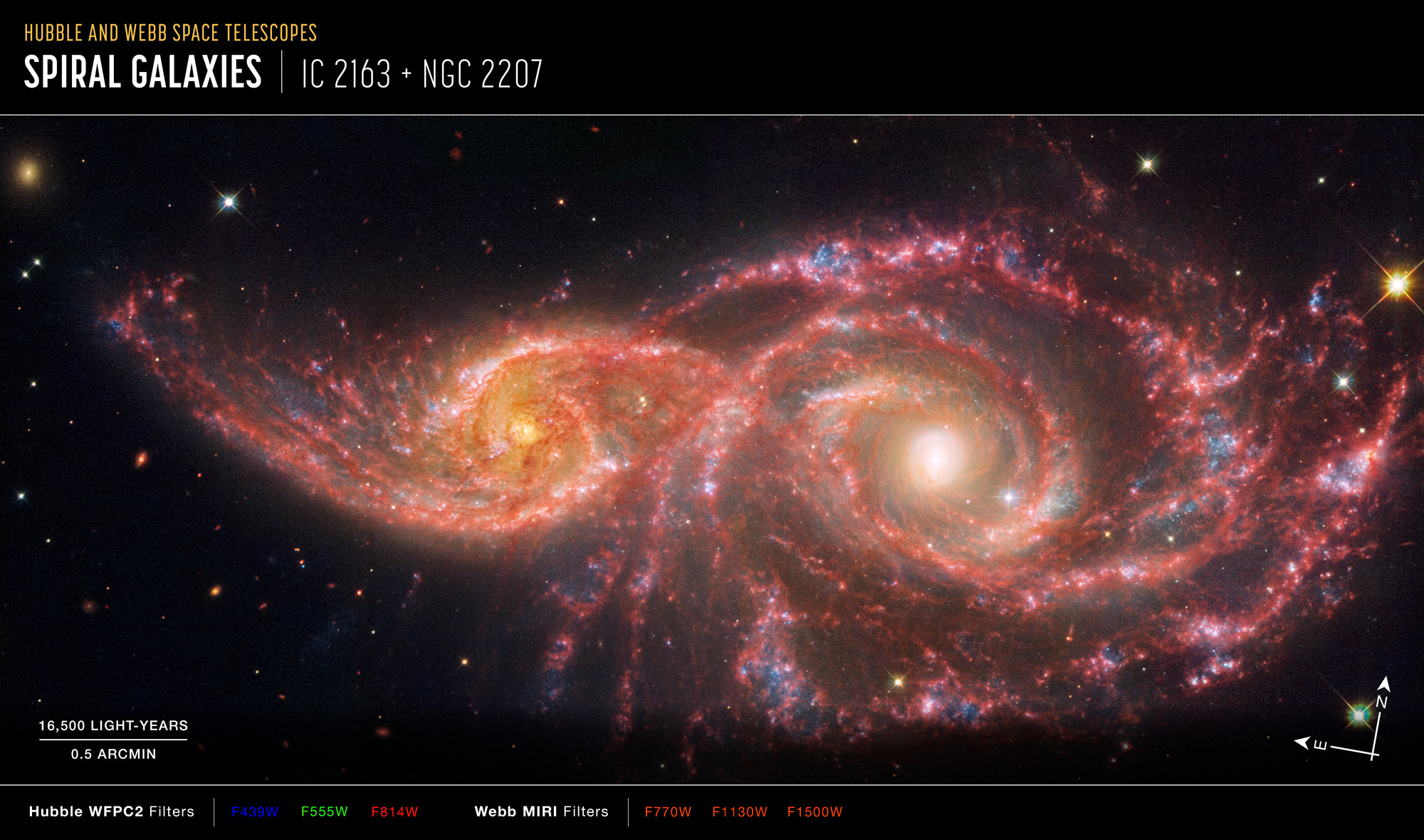
Related Images & Videos
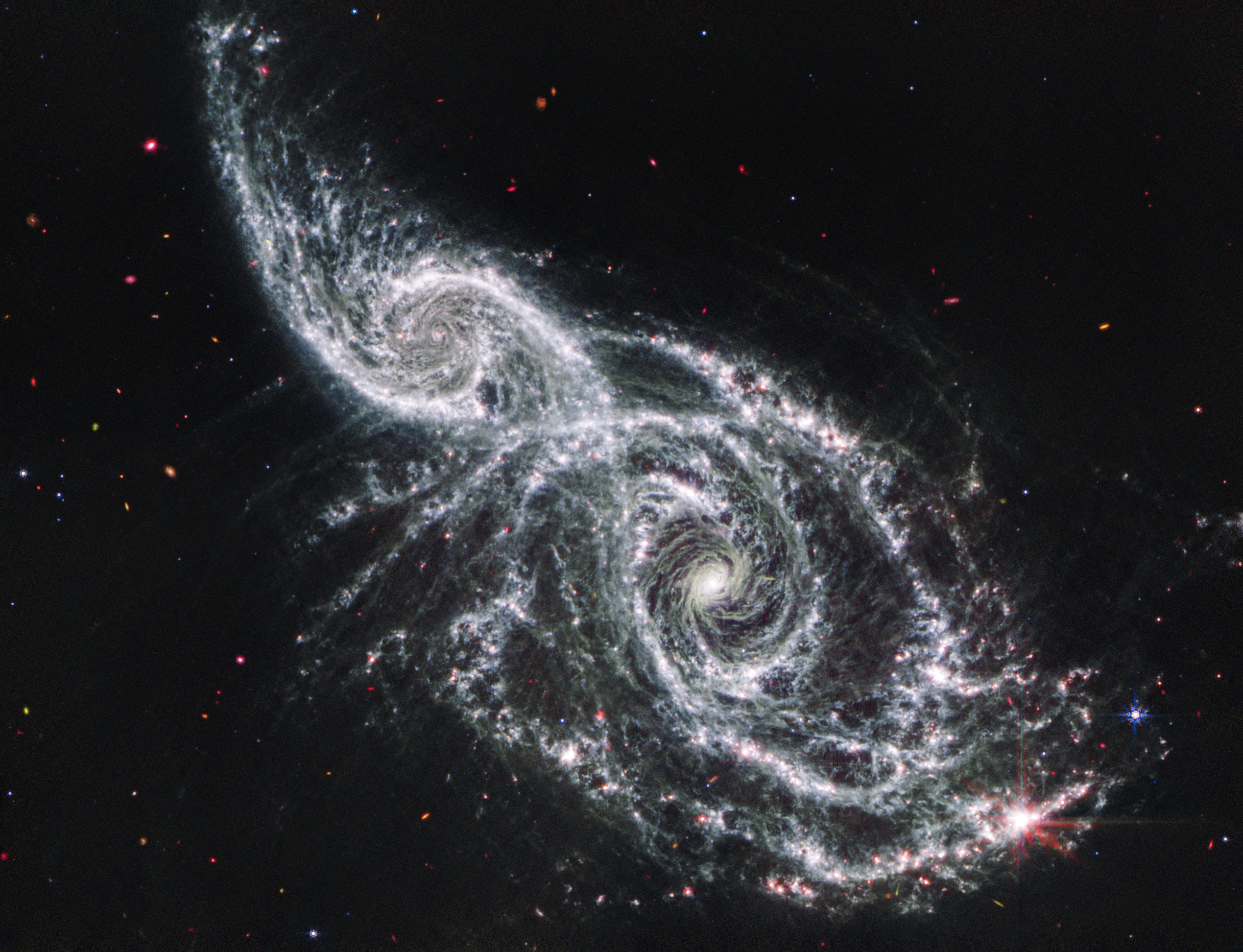
Galaxies IC 2163 and NGC 2207 (Webb MIRI Image)
The James Webb Space Telescope’s mid-infrared image of galaxies IC 2163 and NGC 2207 recalls the iciness of long-dead bones mixed with eerie vapors. Two large luminous “eyes” lie at the galaxies’ cores, and gauzy spiral arms reach out into the vast distances of space. Webb’s...
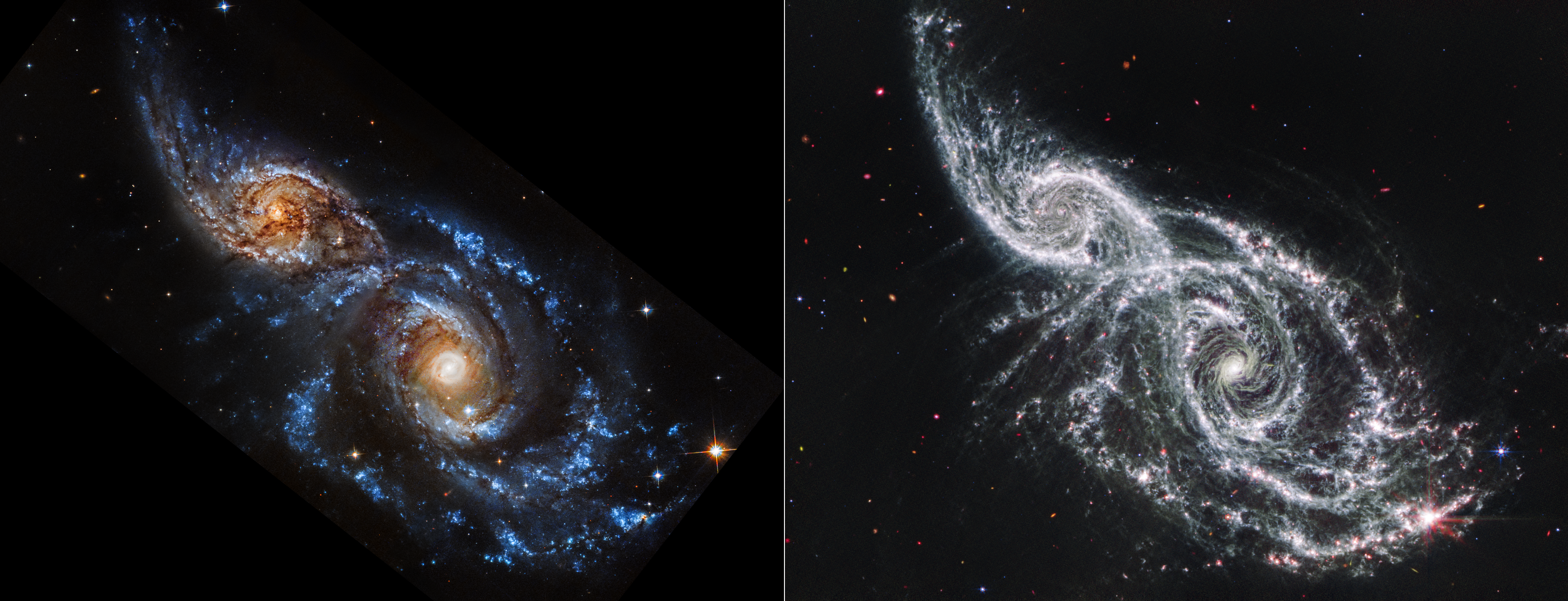
Galaxies IC 2163 and NGC 2207 (Hubble and Webb Images Side by Side)
These are two views of the same scene, each showing two overlapping spiral galaxies, IC 2163 at left and NGC 2207 at right. The Hubble Space Telescope’s ultraviolet- and visible-light observation is at left, and the James Webb Space Telescope’s mid-infrared light observation is...
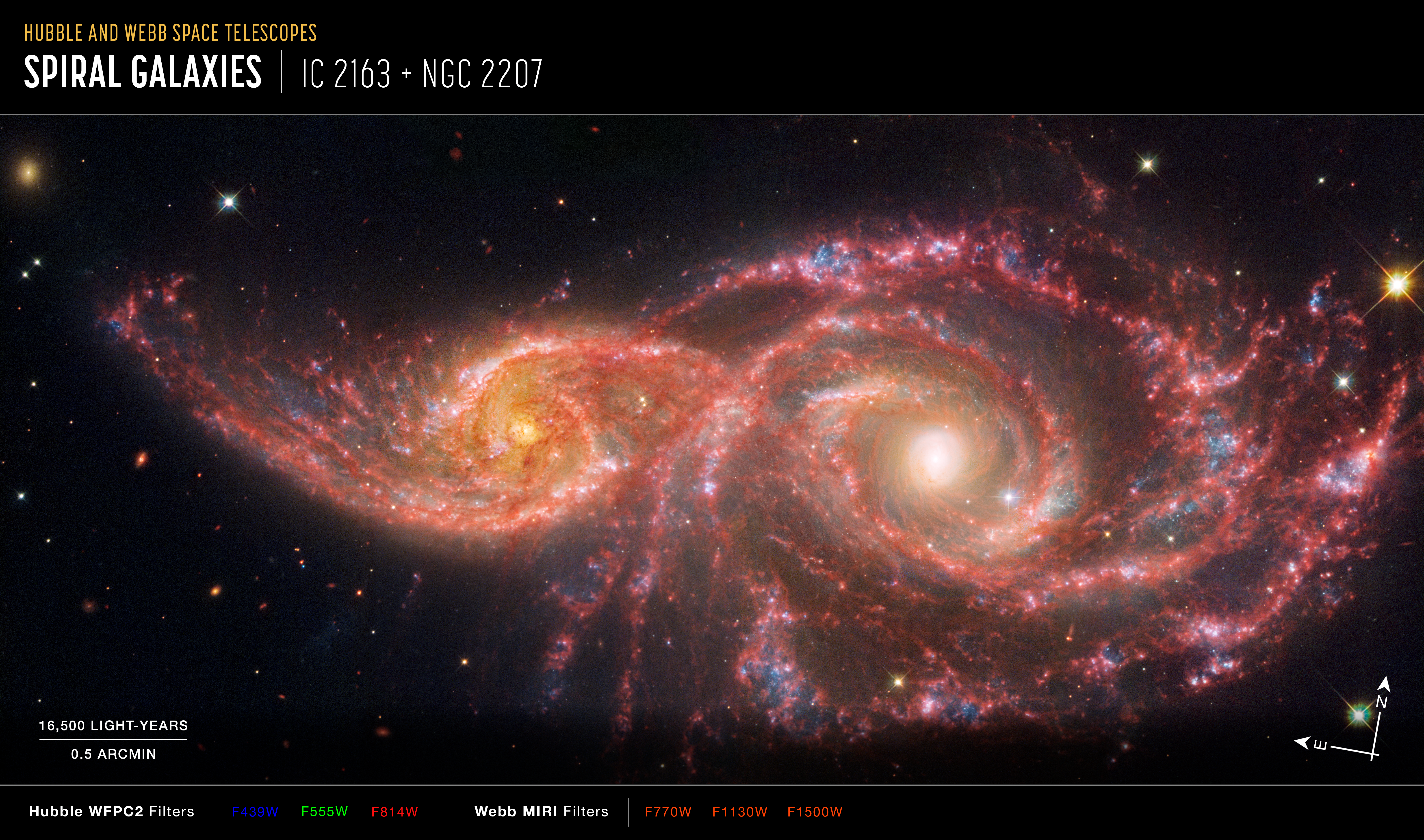
Galaxies IC 2163 and NGC 2207 (Webb and Hubble Compass Image)
This image of galaxies IC 2163 and NGC 2207, captured by the Hubble and James Webb space telescopes. Hubble’s data are from its Wide Field Planetary Camera 2 (WFPC2). Webb’s data are from its MIRI (Mid-Infrared Instrument). The image shows a scale bar, compass arrows, and color...
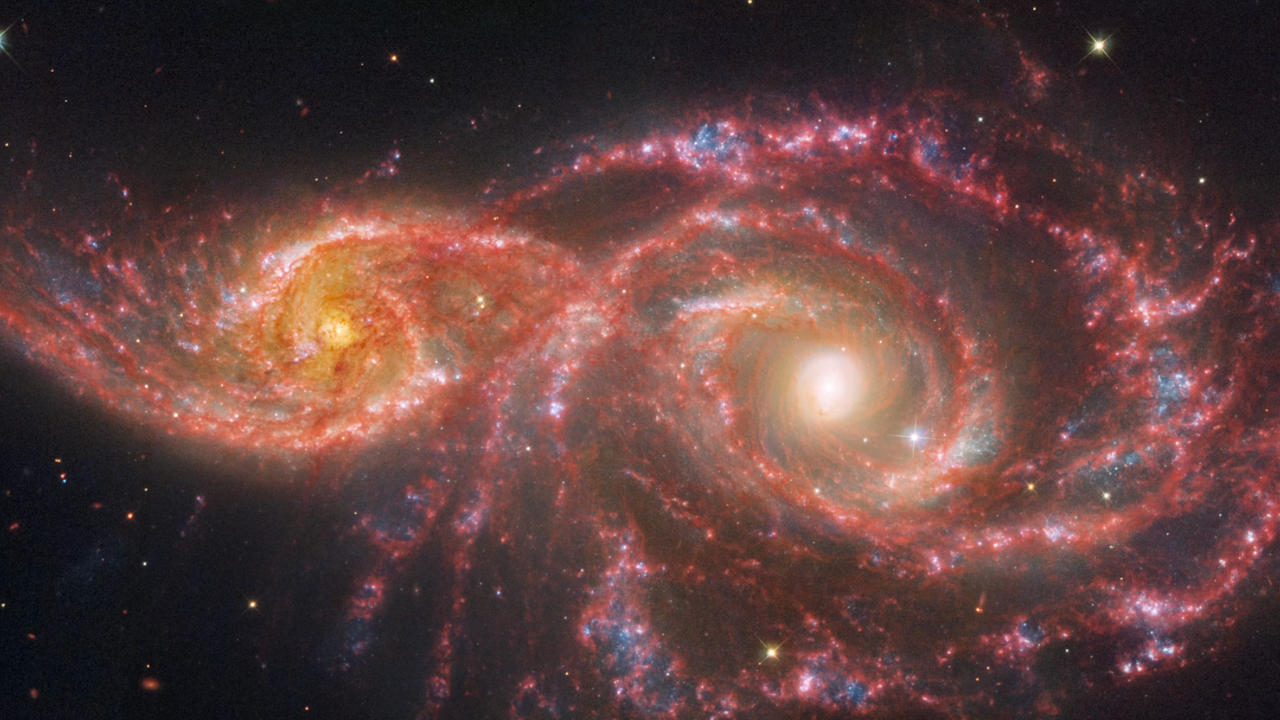
A Tour of IC 2163 and NGC 2207
This video tours a pair of spiral galaxies, IC 2163 at left and NGC 2207 at right, which reside 114 million light-years from Earth. The journey begins and ends on a new image that combines mid-infrared, visible, and ultraviolet light from the James Webb and Hubble space...
Share
Details
Laura Betz
NASA’s Goddard Space Flight Center
Greenbelt, Maryland
laura.e.betz@nasa.gov
NASA, ESA, CSA, STScI













